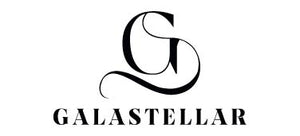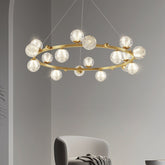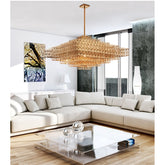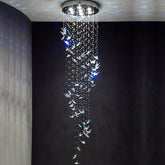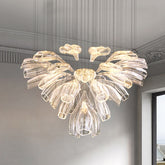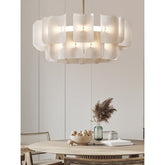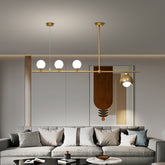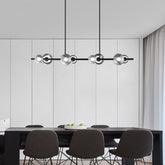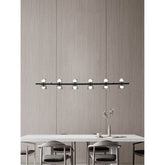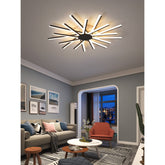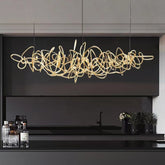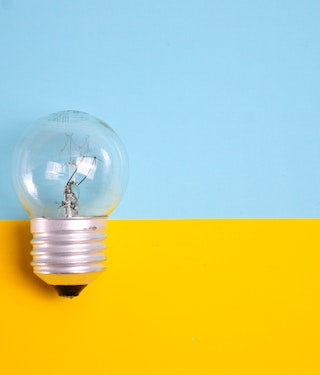From Concept to Reality: exploring the Prototyping and testing phases of designer light products
Designing products is an intricate and iterative process that involves several stages, from ideation to production. Two crucial phases in this process are prototyping and testing. These phases play an essential role in ensuring that the final product is both functional and aesthetically appealing to the end user. In this article, we will explore the prototyping and testing phases in the context of designer light products.
Designer light products are becoming increasingly popular in today's market. According to a report by Technavio, the global designer light products market is expected to grow at a CAGR of over 4% during the forecast period of 2021-2025. This growth can be attributed to the increasing demand for energy-efficient lighting solutions and the growing preference for aesthetically pleasing lighting fixtures in both residential and commercial spaces.
As the demand for designer light products continues to grow, it is imperative that designers have a thorough understanding of the prototyping and testing phases to create innovative and sustainable products that meet the needs of their clients. In the following sections, we will delve deeper into the concept phase, prototyping phase, and testing phase of designer light products, highlighting their importance and the challenges faced during each phase.
Understanding the concept phase of designer light products
The concept phase is the initial stage in the design process of designer light products. It involves brainstorming and idea generation to come up with a design concept that meets the client's requirements and aligns with the designer's vision.
The concept phase is critical as it sets the foundation for the rest of the design process. It allows designers to explore various design possibilities and determine the feasibility of each concept. Moreover, it helps them to identify potential design challenges and develop strategies to overcome them.
During the concept phase of designer light products, designers play a crucial role in analyzing the client's needs and defining the design brief. They work closely with the client to understand their preferences, functional requirements, and budget constraints. Based on this information, designers generate a range of design concepts that align with the client's vision and meet their needs.
Designers also take into consideration the latest trends and advancements in lighting technology while developing design concepts. They research the latest materials, finishes, and lighting systems to ensure that the final product is innovative and sustainable.
The prototyping phase of designer light products
The prototyping phase is the stage in the design process of designer light products where designers create physical models of the design concepts generated in the concept phase. This phase is critical as it enables designers to evaluate the feasibility of each design concept, test its functionality, and refine the design accordingly.
The importance of the prototyping phase cannot be overstated, as it allows designers to test the design's physical and functional characteristics. This includes the size, shape, weight, and overall performance of the product. Through prototyping, designers can identify design flaws and rectify them before moving to the final production stage.
There are several prototyping techniques used in designer light products, including 3D printing, CNC machining, laser cutting, and handcrafting. 3D printing is a popular technique used by designers to create physical models quickly and efficiently. CNC machining and laser cutting are used to create prototypes with a high level of precision and accuracy. Handcrafting is a traditional technique used by designers to create prototypes using materials such as wood, metal, and glass.
The prototyping phase of designer light products is not without its challenges. One of the main challenges is the cost of materials and the time it takes to create each prototype. Creating multiple prototypes can be time-consuming and expensive, especially if the designer needs to iterate on the design several times. Additionally, the prototyping process may reveal technical issues or design flaws that require significant changes to the design, which can add to the overall cost and time required to complete the project.
The testing phase of designer light products
The testing phase is the final stage in the design process of designer light products. This phase involves testing the prototype created in the prototyping phase to ensure that it meets the functional and aesthetic requirements specified by the client.
The testing phase is essential as it allows designers to identify any issues with the prototype and make the necessary adjustments before moving to the final production stage. This phase is also crucial in ensuring that the final product meets safety standards and regulatory requirements.
There are several testing techniques used in designer light products, including functionality testing, stress testing, environmental testing, and safety testing. Functionality testing involves testing the product's various functions, such as its lighting capabilities and control systems. Stress testing involves subjecting the product to extreme conditions, such as high temperatures and humidity levels, to ensure its durability and performance under such conditions. Environmental testing involves testing the product's resistance to various environmental factors such as moisture, temperature, and light exposure. Safety testing ensures that the final product meets all safety regulations and standards.
The testing phase of designer light products is not without its challenges. One of the main challenges is the cost of testing. Testing can be expensive, especially if multiple tests are required. Additionally, testing may reveal technical issues or design flaws that require significant changes to the design, which can add to the overall cost and time required to complete the project.
The relationship between the prototyping and testing phases
The prototyping and testing phases of designer light products are closely interdependent. The prototype created in the prototyping phase is tested in the testing phase to identify any issues and make the necessary adjustments. This feedback loop enables designers to refine and improve the design until it meets the client's requirements and exceeds their expectations.
Feedback and iteration are essential in the design process of designer light products. Effective feedback helps designers identify design flaws, technical issues, and other problems with the prototype. This feedback is used to refine and improve the design, which is then tested again to ensure that the changes made have solved the problems identified in the previous testing phase.
Strategies for effectively utilizing feedback during the prototyping and testing phases include gathering feedback from a variety of sources, such as clients, users, and other stakeholders. This feedback should be analyzed and used to improve the design, with changes made to the prototype to reflect the feedback received. Designers should also be open to criticism and willing to iterate on the design, using feedback to make continuous improvements until the design meets the client's requirements and exceeds their expectations.
Another effective strategy is to use a structured approach to the design process, with clearly defined goals, timelines, and milestones. This helps to keep the project on track and ensures that feedback is effectively utilized at each stage of the process. Designers should also ensure that the testing phase is as comprehensive as possible, with a range of tests conducted to identify any issues with the prototype.
Real-world examples of successful prototyping and testing in designer light products
Real-world examples of successful prototyping and testing in designer light products demonstrate the importance of these phases in creating innovative and effective products that meet the needs of the clients and exceed their expectations. Let's take a look at a few examples.
- Philips Hue Light Bulbs
Philips Hue is a popular line of smart light bulbs that allow users to control the color and intensity of their lighting using a smartphone app. To develop this product, Philips used a combination of 3D printing and user testing to create a prototype that could be tested in real-world conditions. The team used 3D printing to quickly create physical prototypes of the product, allowing them to test and refine the design in a cost-effective manner. They also conducted extensive user testing to gather feedback and identify any issues with the product, resulting in a final product that has been praised for its ease of use and versatility.
- Tesla Model S
The Tesla Model S is a luxury electric car that has been praised for its innovative design and performance. To develop this product, Tesla utilized a combination of virtual reality simulations and environmental testing to create a prototype that could withstand a range of real-world conditions. The team used virtual reality simulations to test the car's performance in a range of driving scenarios, allowing them to identify any issues with the design and make the necessary adjustments. They also conducted extensive environmental testing to ensure that the car could withstand extreme temperatures, humidity levels, and other environmental factors.
- Dyson Lightcycle Task Light
The Dyson Lightcycle Task Light is a highly innovative desk lamp that uses advanced lighting technology to adjust its color and brightness based on the user's age, task, and ambient light conditions. To develop this product, Dyson used a combination of 3D printing, user testing, and environmental testing to create a prototype that met the needs of its target audience. The team used 3D printing to quickly create physical prototypes of the lamp, allowing them to test and refine the design in a cost-effective manner. They also conducted extensive user testing to gather feedback and identify any issues with the product, resulting in a final product that has been praised for its innovation and functionality.
These examples demonstrate the importance of prototyping and testing in the design process of designer light products. By using these techniques, designers can create innovative and effective products that meet the needs of their clients and exceed their expectations, resulting in products that are both functional and aesthetically pleasing.
Innovative prototyping and testing techniques in designer light products
Innovative prototyping and testing techniques are rapidly transforming the design process of designer light products. These techniques leverage the latest technologies and methods to improve the accuracy, speed, and cost-effectiveness of prototyping and testing, enabling designers to create better-designed products that meet the client's needs and exceed their expectations.
One of the most popular innovative prototyping techniques is 3D printing. This technology allows designers to create physical prototypes quickly and cost-effectively, making it easier to test and refine the design. 3D printing also enables designers to create complex shapes and structures that would be difficult or impossible to create using traditional prototyping methods.
Another innovative prototyping technique is virtual reality (VR) simulations. VR simulations enable designers to create a virtual environment in which to test the prototype, providing a realistic simulation of the final product's performance and functionality. This allows designers to identify any issues with the prototype and make the necessary adjustments before moving to the final production stage.
Innovative testing techniques are also transforming the design process of designer light products. User testing is one such technique, which involves gathering feedback from actual users of the product. User testing can be conducted through surveys, focus groups, or other methods, and can provide valuable insights into how users interact with the product, enabling designers to identify any issues and make the necessary adjustments.
Environmental testing is another innovative testing technique that is becoming increasingly popular in the design of designer light products. Environmental testing involves subjecting the product to a range of environmental conditions, such as temperature, humidity, and light exposure, to test its durability and performance under different conditions. This testing ensures that the final product meets regulatory requirements and can withstand the environments in which it will be used.
Final Words
The design process of designer light products is complex and requires careful planning and execution to create successful and innovative products. The concept, prototyping, and testing phases are all essential components of this process and must be conducted with attention to detail to ensure the final product meets the needs of the client and exceeds their expectations.
The prototyping phase allows designers to quickly create physical prototypes of their products, test and refine the design, and identify any issues with the product. Similarly, the testing phase allows designers to gather feedback from users and identify any issues with the product's functionality or design.
The interdependence between the prototyping and testing phases highlights the importance of feedback and iteration in the design process. By using innovative prototyping and testing techniques, designers can create products that are both functional and aesthetically pleasing, meeting the needs of their clients and exceeding their expectations.
